COVID-19: TCTMD’s Daily Dispatch for May Week 2
We’re curating a list of COVID-19 research and other useful content, and updating it daily.
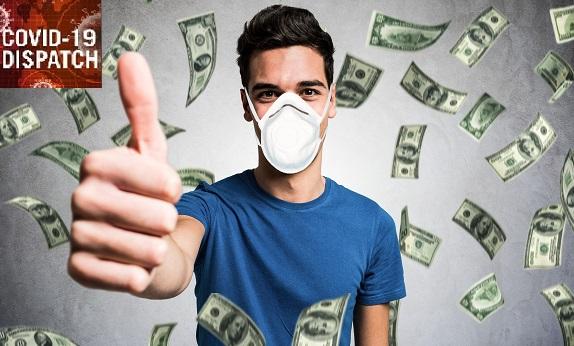
TCTMD reporter Todd Neale is keeping up on breaking news and peer-reviewed research related to COVID-19 and will update daily. If you have something to share, tell us. All of our COVID-19 coverage can be found on our COVID-19 Hub.
May 14, 2021
 The breaking news yesterday coming from the US Centers for Disease Control and Prevention (CDC) that masks and social distancing are no longer needed indoors for fully vaccinated adults in the United States was met with tears, celebration, and some confusion. The New York Times chronicles the different regional and political reactions, pointing out that the guidance is at odds with the predictions and recommendations of “hundreds of epidemiologists” who expected mask-wearing to be the norm for at least a year.
The breaking news yesterday coming from the US Centers for Disease Control and Prevention (CDC) that masks and social distancing are no longer needed indoors for fully vaccinated adults in the United States was met with tears, celebration, and some confusion. The New York Times chronicles the different regional and political reactions, pointing out that the guidance is at odds with the predictions and recommendations of “hundreds of epidemiologists” who expected mask-wearing to be the norm for at least a year.
The World Health Organization’s Michael Ryan, MB BCh, MPH, reacted to the US decision at a press conference today, stressing that local conditions should be taken into account. “In the instance of a country that wishes to take away a mask mandate . . . that should only be done in the context of considering both the intensity of transmission in the area and the level of vaccine coverage,” Ryan is quoted by Reuters.
In stark contrast to the buoyant mood in the US, India is continuing to grapple with the world’s highest rate of new daily cases and more than 4,000 deaths per day. As the Times of India reports, the costs of keeping people alive continue to soar, but so, too, do the costs of paying for funeral rites, with the prices for hearse drivers, firewood, and crematorium services climbing exponentially higher for those trying to pay for last rites for their loved ones.
In a “call for international action” published in the Lancet today, a team of scientists, clinicians, and public health professionals working in or collaborating closely with India detail what they believe are the eight necessary steps “the international community must take to help address the crisis in India.” First and foremost, they say: expand healthcare capacity with donations of oxygen concentrators, ventilators, medications, vaccines, personal protective equipment, and rapid tests.
The British Heart Foundation’s Heart Matters website has kept up a running synopsis of the latest COVID-19 variants and how these are responding to vaccines. In its latest update yesterday, it notes that the variant first detected in India making headlines around the world (B.1.617) has several mutations that make it easier to pass along and more resistant to an immune response. According to the website, US and European authorities have said they have data suggesting coronavirus vaccines will be effective, but that these data are not yet publicly available.
EMA is monitoring very closely the data on the Indian variant. We are seeing promising evidence that mRNA vaccines would be able to neutralise this variant. #EMAPresser
— EU Medicines Agency (@EMA_News) May 12, 2021
The BBC is reporting that second vaccine doses, which have been delayed in the United Kingdom—and in other countries, like Canada—in order to give first shots to as many people as possible, may be “brought forward” to help protect against the B.1.617 variant.
“Full vaccination” has been the holy grail in the minds of many, but the situation unfolding in the Seychelles is giving people pause. Called the “most vaccinated country on earth,” the small nation comprised of 115 islands is seeing a surge in COVID-19 cases. Worse: more than one-third of new infections are happening in people who’d already received two doses of their vaccine, which in the Seychelles is predominantly the Chinese Sinopharm shot (57%); the Oxford/AstraZeneca vaccine makes up the rest (43%). Most cases reported in recent weeks have been mild. According to CNBC, the “WHO’s Director of Immunization, Vaccines, and Biologicals, Dr. Kate O’Brien, said in a briefing that the WHO was in direct communication with the Seychelles’ health ministry and that the situation was a ‘more complicated situation than the top-line messages.’”
Studies show use of opioids has increased during the pandemic, as have nonfatal opioid overdose visits to emergency departments. Now, new research indicates that prescriptions of naloxone, used acutely to counter the effects of opioid overdose, declined abruptly in March 2020 but did not recover over the next 9 months. “Our study identifies an urgent gap in necessary access to medication for individuals on Medicare and commercial insurance during the pandemic,” authors write in JAMA Health Forum.
The American College of Cardiology 2021 Scientific Session kicks off virtually this weekend. Included among the Featured Clinical Research presentations on Sunday at 2PM ET are a series of abstracts related to COVID-19. The ACTION trial is testing routine full dose anticoagulation in patients admitted to the hospital, while INSPIRATION-S is a double-blind randomized controlled trial of atorvastatin in critically ill patients. A third study looks at a machine-learning approach for the diagnosis of cardiac injury using echocardiography, while a fourth assesses the impact of COVID-19 on the health and well-being of the global cardiovascular workforce.
 Ohio is taking a unique approach to encouraging its residents to get their vaccines: “Ohio Gov. Mike DeWine unveiled a lottery system Wednesday to entice people to get COVID-19 shots, offering a weekly $1 million prize and full-ride college scholarships in a creative bid to overcome the vaccine hesitancy that remains a stubborn problem across the nation,” AP reports.
Ohio is taking a unique approach to encouraging its residents to get their vaccines: “Ohio Gov. Mike DeWine unveiled a lottery system Wednesday to entice people to get COVID-19 shots, offering a weekly $1 million prize and full-ride college scholarships in a creative bid to overcome the vaccine hesitancy that remains a stubborn problem across the nation,” AP reports.
TCTMD managing editor Shelley Wood contributed today’s Dispatch.
May 13, 2021
People who are “fully” vaccinated no longer need to wear a face mask indoors or out, or to keep a 6-foot gap between them and other people, the US Centers for Disease Control and Prevention (CDC) announced today. “We have all longed for this moment when we can get back to some sense of normalcy," CDC Director Rochelle Walensky, MD, said during a media briefing that was widely televised Thursday afternoon. “Based on the continuing downward trajectory of cases, the scientific data on the performance of our vaccines, and our understanding of how the virus spreads that moment has come for those who are fully vaccinated." Full details on the new rules have been posted to the CDC website.
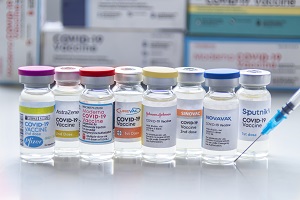 Preliminary data out of the multicenter Com-COV initiative addressing the safety and efficacy of using different vaccine types for the primary and secondary doses have been published in the Lancet. The Com-COV studies, based in the UK, are being closely watched by countries around the world that paused or halted the use of the approved non-mRNA vaccines due to clotting concerns, and by authorities worried about the supply chain. In this early report, both types of heterologous dosing—in which a first Oxford/AstraZeneca vaccine was followed by Pfizer/BioNTech 28 days later, or the reverse—were associated with higher systemic reactogenicity after the booster dose, as compared with patients who received two doses of the same vaccine. Fever, chills, fatigue, headache, joint pain, malaise, and muscle ache were more common among the recipients of heterologous doses, but most symptoms resolved within 48 hours and “there were no concerns from the limited hematology and biochemistry data.” Primary immunological outcome data are expected next month; additional first/second dose studies combining different vaccines are also in the works.
Preliminary data out of the multicenter Com-COV initiative addressing the safety and efficacy of using different vaccine types for the primary and secondary doses have been published in the Lancet. The Com-COV studies, based in the UK, are being closely watched by countries around the world that paused or halted the use of the approved non-mRNA vaccines due to clotting concerns, and by authorities worried about the supply chain. In this early report, both types of heterologous dosing—in which a first Oxford/AstraZeneca vaccine was followed by Pfizer/BioNTech 28 days later, or the reverse—were associated with higher systemic reactogenicity after the booster dose, as compared with patients who received two doses of the same vaccine. Fever, chills, fatigue, headache, joint pain, malaise, and muscle ache were more common among the recipients of heterologous doses, but most symptoms resolved within 48 hours and “there were no concerns from the limited hematology and biochemistry data.” Primary immunological outcome data are expected next month; additional first/second dose studies combining different vaccines are also in the works.
Also in the Lancet yesterday, a letter to the editors raises “serious concerns” about interim results published from the phase III trial of the Russian-made Sputnik V vaccine: the paucity of available data, deviations from trial protocol, and the lack of access to the full study protocol itself, primary outcome definitions, parameters for confirming a COVID-19 diagnosis, as well as enrollment and randomization of subjects, among a number of other serious allegations. A response from investigators attempts to rebut concerns.
German researchers believe they’ve discovered why and how the vaccines developed by Oxford/AstraZeneca and Janssen/Johnson & Johnson produce a rare autoimmune reaction that leads to blood clots and thrombocytopenia. Andreas Greinacher, MD, PhD, and colleagues at the University of Greifswald—the same group that published one of the first vaccine-induced immune thrombotic thrombocytopenia (VITT/VIPIT) papers—published their mechanisms paper to a preprint server late last month. A Wall Street Journal article sums up that research today. The culprits, according to Greinacher, may be stray proteins found in the vaccines, derived from human cells, that interact with a preservative known as ethylenediaminetetraacetic acid, or EDTA. “Their hypothesis is that EDTA, which is common to drugs and other products, helps those proteins stray into the bloodstream, where they bind to a blood component called platelet factor 4, or PF4, forming complexes that activate the production of antibodies,” the WSJ story explains.
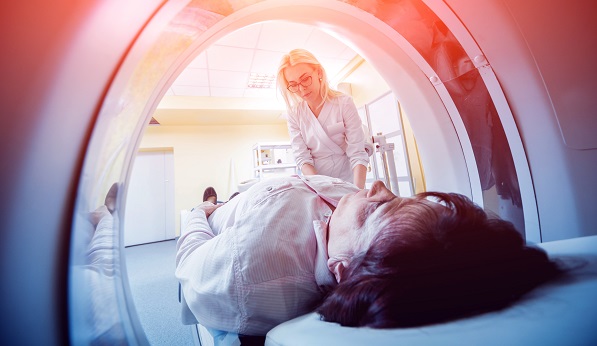 Mild cases of COVID-19 that do not require hospitalization were unlikely to have any lasting cardiovascular effect on otherwise healthy healthcare workers, according to a study published in JACC: Cardiovascular Imaging. Published the same week in Circulation, the latest in a series of analyses looking at college athletes who recovered from mild COVID found no evidence of cardiac damage on imaging. TCTMD’s L.A. McKeown has the story.
Mild cases of COVID-19 that do not require hospitalization were unlikely to have any lasting cardiovascular effect on otherwise healthy healthcare workers, according to a study published in JACC: Cardiovascular Imaging. Published the same week in Circulation, the latest in a series of analyses looking at college athletes who recovered from mild COVID found no evidence of cardiac damage on imaging. TCTMD’s L.A. McKeown has the story.
As noted in the Dispatch yesterday, the World Health Organization (WHO)-appointed Independent Panel for Pandemic Preparedness and Response delivered their report yesterday that reviews pandemic preparedness, with recommendations for tackling future crises. A perspective in the Lancet, penned by the panel co-chairs, summarizes the key reforms recommended.
Health authorities in the United States are planning to help boost vaccinations of children age 12 to 15 by making the shots available not only at schools, but also at pediatrician’s offices, day camps, parks, and even beaches, the New York Times reports. As many as 20,000 pharmacies are also poised to start vaccinations in this age group as of today.
A new, highly infectious variant is sweeping prisons in Thailand at an “alarming” rate, another New York Times article observes. “Protective measures that were effective in the prisons last year . . . are not working well now,” a chief prison doctor said.
There’s growing evidence that widely used vaccines are offering protection against the original and evolving variants, the Los Angeles Times summarizes. Protection extends to the oft-cited United Kingdom, South Africa, and Brazil variants, as well as several “homegrown” strains, the article notes. Quoted is cardiologist Eric Topol, MD, who says, “Everything we’ve seen with the variants should provide marked reassurance, as far as the protection that is afforded by vaccines — particularly the vaccines that we have in the United States.” A research letter in the New England Journal of Medicine yesterday helps bolster the case, looking specifically at the effects of the Pfizer/BioNTech shot.
 The majority of children infected with the SARS-CoV-2 virus may not show recognizable symptoms, according to a study published in Scientific Reports. Among 12,306 children in the United States with laboratory-confirmed COVID-19, fewer than one in five had fever, malaise, muscle or joint pain, or alterations in smell or taste.
The majority of children infected with the SARS-CoV-2 virus may not show recognizable symptoms, according to a study published in Scientific Reports. Among 12,306 children in the United States with laboratory-confirmed COVID-19, fewer than one in five had fever, malaise, muscle or joint pain, or alterations in smell or taste.
A viewpoint in JAMA Oncology concludes that while there are many unknowns regarding the optimal schedule for COVID-19 vaccination in patients with cancer, the body of evidence supports “careful endorsement” of vaccines in this group. The article goes on to recommend a “reasonable” dosing schedule, timed around chemotherapy and chemoradiation, and to provide a list of key unanswered questions pertinent to these patients.
TCTMD Managing Editor Shelley Wood contributed today’s Dispatch.
May 12, 2021
The World Health Organization (WHO) is warning the COVID-19 “variant of concern” that recently emerged in India might be more contagious than other strains of the virus, according to a report released last night, although it’s not yet clear whether the B.1.617 variant is to blame for the devastating surge that has crushed India in recent weeks, the New York Times notes. India, like many other countries, cannot keep up with the genome sequencing required to identify all of the variants in circulation.
 McDonald’s, the fast food chain, has teamed up with the White House to help disseminate trustworthy, factual information about vaccines, ABC News reports. Starting in July, McCafé cups and McDelivery seal stickers will promoted the US Centers for Disease Control and Prevention (CDC) website, Vaccines.gov.
McDonald’s, the fast food chain, has teamed up with the White House to help disseminate trustworthy, factual information about vaccines, ABC News reports. Starting in July, McCafé cups and McDelivery seal stickers will promoted the US Centers for Disease Control and Prevention (CDC) website, Vaccines.gov.
The Independent Panel for Pandemic Preparedness and Response, an expert group assembled by the WHO, says the worldwide havoc created by COVID-19 should serve as “the 21st century’s Chernobyl moment” for global health reform in a report issued today. The disease has “shown so clearly the gravity of the threat to our health and well-being.” As the pandemic continues to kill more than 10,000 people every day, the document reads, the urgent need is to work together to end the pandemic, while also collaborating now to avert the next.
COVID-19 has exposed weak links in the medical evidence chain across the globe, writes Helen Pearson in a Nature news feature. “Researchers have registered more than 2,900 clinical trials related to COVID-19, but the majority are too small or poorly designed to be of much use,” Pearson writes. “Organizations worldwide have scrambled to synthesize the available evidence on drugs, masks and other key issues, but can’t keep up with the outpouring of new research, and often repeat others’ work.” She quotes Huseyin Naci, PhD, a health-policy expert at the London School of Economics, as saying there’s been “research waste at an unprecedented scale.”
In the past two decades, three “highly pathogenic” coronaviruses have crossed into humans from animals, Maximilian M. Sauer, PhD, and colleagues write in Nature today. Their analysis lays out the evidence for a monoclonal antibody that broadly neutralizes coronaviruses, raising the potential for a vaccines that could protect against the spectrum of beta coronaviruses like SARS-CoV-2.
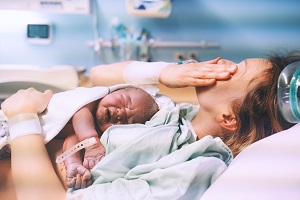 Early in the pandemic, several countries around the world reported a dip in preterm births, potentially related to lockdowns, while others raised concerns about an uptick in stillbirths due to hospital avoidance. New research from Canada has failed to bear out either scenario. Of 67,747 births during the first 6 months of the pandemic in the province of Ontario, as compared with historic controls, there was no difference in rates of preterm births, still births, or other perinatal outcomes, authors conclude in JAMA Network Open.
Early in the pandemic, several countries around the world reported a dip in preterm births, potentially related to lockdowns, while others raised concerns about an uptick in stillbirths due to hospital avoidance. New research from Canada has failed to bear out either scenario. Of 67,747 births during the first 6 months of the pandemic in the province of Ontario, as compared with historic controls, there was no difference in rates of preterm births, still births, or other perinatal outcomes, authors conclude in JAMA Network Open.
A case series published in JAMA Dermatology delves into reports of “pruritic, painful, and edematous pink plaques,” sometimes called “COVID arm,” developing at the injection site 2 to 12 days after vaccination with the Moderna vaccine. The cause, say the authors, is a local, delayed hypersensitivity reaction, which is self-limited and should not preclude subsequent vaccinations.
Prior contact-tracing research has established that new SARS-CoV-2 cases are often linked to a relatively small number of infected people, leading to the concept of individual “superspreaders.” An analysis in Trends in Microbiology takes a stab at understanding what qualities lead to someone becoming a superspreader, concluding that the genetic sequence of the virus, disease severity, and host conditions—including comorbidities—are not among them. Instead, “donor modification of the virion or the donor microbiome may play a potential role in super spreading,” the researchers say, along with physical constraints and environmental factors.
 In Nepal, relief groups are asking mountain climbers to bring back the empty oxygen cylinders used to ascend Mount Everest, rather than discarding them on the mountain, so they can be refilled for COVID-19 patients, the Guardian reports. “Climbers and their Sherpa guides were estimated to have carried at least 3,500 oxygen bottles this season—now they need to be refilled.”
In Nepal, relief groups are asking mountain climbers to bring back the empty oxygen cylinders used to ascend Mount Everest, rather than discarding them on the mountain, so they can be refilled for COVID-19 patients, the Guardian reports. “Climbers and their Sherpa guides were estimated to have carried at least 3,500 oxygen bottles this season—now they need to be refilled.”
TCTMD managing editor Shelley Wood contributed today’s Dispatch.
May 11, 2021
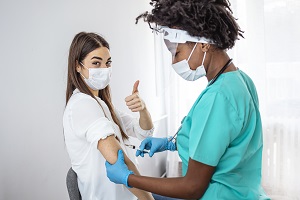 As expected, the US Food and Drug Administration (FDA) has expanded the authorized use of the Pfizer/BioNTech vaccine to include adolescents ages 12 to 15, about a week after Canadian regulators did the same. According to Reuters, an FDA official said vaccinations in this age group could begin as soon as Thursday.
As expected, the US Food and Drug Administration (FDA) has expanded the authorized use of the Pfizer/BioNTech vaccine to include adolescents ages 12 to 15, about a week after Canadian regulators did the same. According to Reuters, an FDA official said vaccinations in this age group could begin as soon as Thursday.
India’s 7-day average for new COVID-19 cases hit another high, bringing the total number of confirmed cases to about 23 million and deaths to about 250,000, Reuters reports. That coincides with a decision by the World Health Organization (WHO) to classify the B.1.617 strain of SARS-CoV-2 first identified in India as a variant of concern at the global level, the fourth variant to receive that designation.
Risk of severe postacute complications after a SARS-CoV-2 infection that does not require a hospital stay is low, according to a study in the Lancet Infectious Diseases. However, those with a prior infection had more visits to their general practitioner and outpatient hospital visits 2 weeks to 6 months after their positive test result than did people who were not infected, which “could indicate COVID-19 sequelae,” the authors say.
About eight in every 10 patients hospitalized with COVID-19 have a neurological manifestation, according to a study in JAMA Network Open. The most-common self-reported symptoms were headache (37%) and anosmia or ageusia (26%), and the most-common neurological signs and/or syndromes were acute encephalopathy (49%), coma (17%), and stroke (6%). Presence of any of the latter findings was associated with an increased risk of dying in the hospital.
 A story by STAT’s Nicholas Florko delves into why the CDC’s cautious messaging around COVID-19 has appeared to lag behind emerging evidence during the pandemic, with the agency’s recent acknowledgement that there is airborne transmission of SARS-CoV-2—months after experts starting warning about it—serving as an example. “Most experts interviewed for this story say the agency has struggled to take advantage of the latest scientific findings to communicate as rapidly as possible with the American public,” Florko writes. “And when the guidance is issued, it tends to be overly cautious.”
A story by STAT’s Nicholas Florko delves into why the CDC’s cautious messaging around COVID-19 has appeared to lag behind emerging evidence during the pandemic, with the agency’s recent acknowledgement that there is airborne transmission of SARS-CoV-2—months after experts starting warning about it—serving as an example. “Most experts interviewed for this story say the agency has struggled to take advantage of the latest scientific findings to communicate as rapidly as possible with the American public,” Florko writes. “And when the guidance is issued, it tends to be overly cautious.”
A screening study conducted at the University of Colorado Boulder campus showed that the distribution of viral loads in the asymptomatic college population was similar to that seen in hospitalized COVID-19 patients, and that about 50% of people who tested positive were in noninfectious phases of the infection. Moreover, just 2% of infected people carried about 90% of the virions circulating in the community, with these individuals “serving as viral ‘supercarriers’ and likely also superspreaders,” researchers report in PNAS. They say “community screening to identify viral supercarriers within presymptomatic and asymptomatic stages of disease will be important, since these individuals will continue to sustain and drive the epidemic if not located.”
Novavax has pushed back the timing of regulatory filings and production for its COVID-19 vaccine, saying that it doesn’t expect to seek authorization in the United States and Europe until the third quarter of the year, Reuters reports: “The Maryland-based company has repeatedly pushed back production forecasts and has struggled to access raw materials and equipment needed to make its vaccine.” Novavax said it doesn’t expect to be able to start producing 150 million shots per month until the fourth quarter of this year, a delay from previous estimates of sometime during the third quarter.
US Centers for Disease Control and Prevention (CDC) researchers found that COVID-19 vaccine initiation among people 65 and older was higher in men than in women and lower in counties with greater proportions of people with social vulnerabilities. “CDC, state, and local jurisdictions in partnerships with communities should continue to identify and implement strategies to improve access to COVID-19 vaccination for older adults, such as assistance with scheduling vaccination appointments and transportation to vaccination sites, or vaccination at home if needed for persons who are homebound.” Find the full report in Morbidity and Mortality Weekly Report.
 The New York Times is keeping track of reopening plans and mask mandates for all 50 US states, noting that “it appears much of the country will be open with few restrictions in the coming months.” As of Monday, 26 of the 50 states were listed as open.
The New York Times is keeping track of reopening plans and mask mandates for all 50 US states, noting that “it appears much of the country will be open with few restrictions in the coming months.” As of Monday, 26 of the 50 states were listed as open.
May 10, 2021
The government of India is alerting doctors to be on the lookout for signs of mucormycosis or “black fungus” in response to increasing reports of the rare infection in COVID-19 patients, Reuters reports. The Indian Council of Medical Research noted that early symptoms include “sinus pain or nasal blockage on one side of the face, one-sided headache, swelling or numbness, toothache, and loosening of teeth.”
 The World Health Organization (WHO), on Friday, gave the go-ahead for emergency use of the COVID-19 vaccine made by China’s Sinopharm, “potentially paving the way for millions of the doses to reach needy countries through a United Nations-backed program [COVAX] rolling out coronavirus vaccines,” the Associated Press reports. This is the first Chinese vaccine to get such an authorization from the WHO.
The World Health Organization (WHO), on Friday, gave the go-ahead for emergency use of the COVID-19 vaccine made by China’s Sinopharm, “potentially paving the way for millions of the doses to reach needy countries through a United Nations-backed program [COVAX] rolling out coronavirus vaccines,” the Associated Press reports. This is the first Chinese vaccine to get such an authorization from the WHO.
The WHO is also restarting its Solidarity trial, this time to examine the impact of three drugs with anti-inflammatory properties in patients hospitalized with COVID-19, according to a news story in Nature. In the initial phases of the pandemic, the trial had focused on antiviral treatments. This new phase will test infliximab (used to treat autoimmune conditions), imatinib (a cancer drug), and artesunate (an antimalarial agent), all added to standard care.
A SARS-CoV-2 variant first detected in India has been found in about 20 people in France, Reuters reports. An explainer goes into what’s known about the variant, called B.1.617, which has two key mutations to the outer “spike” portion of the virus that attaches to cells: “The WHO has described it as a ‘variant of interest,’ suggesting it may have mutations that would make the virus more transmissible, cause more severe disease, or evade vaccine immunity.”
On Friday, the US Centers for Disease Control and Prevention (CDC) updated its guidance on how COVID-19 spreads, acknowledging the important role of airborne transmission. The CDC makes it clear “that airborne virus can be inhaled even when one is more than 6 feet away from an infected individual,” the New York Times reports. “The new language, posted online, is a change from the agency’s previous position that most infections were acquired through ‘close contact, not airborne transmission.’”
 Hugging is coming back to the United Kingdom as COVID-19 numbers continue to fall, ratcheting down the country’s alert level, the Associated Press reports. There are now about 2,000 new cases per day, well below the daily peak of about 70,000 in January; only two COVID-19 deaths were recorded on Sunday. “While hugs between households will be allowed again beginning May 17, [Prime Minister Boris] Johnson is expected to stress that they should be done with care, given concerns about new virus variants that could bypass some of the immunity provided by Britain’s successful vaccination campaign.” Reuters has more on the easing of pandemic-related restrictions in the UK.
Hugging is coming back to the United Kingdom as COVID-19 numbers continue to fall, ratcheting down the country’s alert level, the Associated Press reports. There are now about 2,000 new cases per day, well below the daily peak of about 70,000 in January; only two COVID-19 deaths were recorded on Sunday. “While hugs between households will be allowed again beginning May 17, [Prime Minister Boris] Johnson is expected to stress that they should be done with care, given concerns about new virus variants that could bypass some of the immunity provided by Britain’s successful vaccination campaign.” Reuters has more on the easing of pandemic-related restrictions in the UK.
An echocardiographic measure of preclinical heart failure—first-phase ejection fraction, which is measured in early systole up to the time of peak aortic velocity—is associated with increased mortality in patients with COVID-19, according to a study in Hypertension. It was more strongly associated with mortality than other variables including age, comorbidities, and biochemical markers.
Use of nonsteroidal anti-inflammatory drugs (NSAIDs) is not associated with increased in-hospital mortality or more-severe disease in patients hospitalized with COVID-19, researchers report in the Lancet Rheumatology. NSAID users also were not more likely to have acute kidney injury or require critical care, invasive or noninvasive ventilation, or oxygen. Early in the pandemic, there were some suggestions that NSAID use might worsen COVID-19 severity.
As some places start to grapple with how to increase COVID-19 vaccination coverage in hesitant populations, other countries are still dealing with a complete lack of vaccines, the Associated Press reports. According to the World Health Organization, nearly a dozen countries have not received any doses, and that includes many African nations, such as Chad, Burkina Faso, Burundi, Eritrea, and Tanzania. This problem is concerning both for unprotected residents of those countries and for others around the world, as new viral variants might emerge from these “vaccine deserts,” one official warned.
 Romanian doctors are getting creative to encourage people to get vaccinated, offering shots just outside Bran Castle, the supposed inspiration behind Count Dracula’s home in Bram Stoker’s 19th-century novel, the Associated Press reports. No appointments will be necessary for the May weekend clinics, and “those brave enough to get a Pfizer vaccine shot receive a ‘vaccination diploma,’ which is aptly illustrated with a fanged medical worker brandishing a syringe.”
Romanian doctors are getting creative to encourage people to get vaccinated, offering shots just outside Bran Castle, the supposed inspiration behind Count Dracula’s home in Bram Stoker’s 19th-century novel, the Associated Press reports. No appointments will be necessary for the May weekend clinics, and “those brave enough to get a Pfizer vaccine shot receive a ‘vaccination diploma,’ which is aptly illustrated with a fanged medical worker brandishing a syringe.”
Todd Neale is the Associate News Editor for TCTMD and a Senior Medical Journalist. He got his start in journalism at …
Read Full Bio


Comments